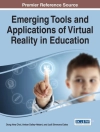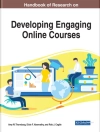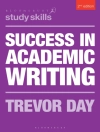
How do cultural planners and policymakers work through the arts to create communities? What do artists need to build a sense of place in their community? To discuss these issues, Developing a Sense of Place brings together new models and case studies, each drawn from a specific geographical or socio-cultural context.
Selected for their lasting effect in their local community, the case studies explore new models for opening up the relationship between the university and its regional partners, explicitly connecting creative, critical and theoretical approaches to civic development. The volume has three sections: Case Studies of Place-Making; Models and Methods for Developing Place-Making Through the Arts; and Multidisciplinary Approaches to Place and Contested Identities. The sections cover regions in the UK such as Bedford, East Anglia, Edinburgh, Manchester, London, Plymouth and Wakefield, and internationally in countries such as Brazil, Turkey and Zimbabwe.
Developing a Sense of Place offers a range of viewpoints from, for example, the arts strategist, the academic, the practice-researcher and the artist. Through its innovative models, from performing arts to architectural design, the volume will serve the needs and interests of arts and cultural policy managers, master planners and arts workers, as well as students of Human Geography, Cultural Planning, Business and the Creative Industries, and Arts Administration, at undergraduate and postgraduate level.
Praise for Developing a Sense of Place
‘The reader can leisurely dip into a number of case studies. A wide range of invested experts, artists and local people … makes this both insightful and engaging.’
Journal of Urban Design
Зміст
List of figures
List of tables
Notes on contributors
Foreword by Hedley Roberts
Acknowledgements
Introduction: Sensing place, a moment to reflect
Tamara Ashley and Alexis Weedon
Section 1: Case studies of place-making
1. Eastern Angles: A sense of place on stage
Ivan Cutting
2. Lesson drawing and community engagement: The experience of Take A Part in Plymouth
Kim Wide and Rory Shand
3. Raising the Barr
Sanna Wicks
4. Interview with E17 Art Trail directors Laura Kerry and Morag Mc Guire
Alexis Weedon
Section 2: Models and methods for developing place-making through the arts
5. A model for university–town partnership in the arts: Test Beds
Emma-Rose Payne and Alexis Weedon
6. The Beam archive, Wakefield
Kerry Harker
7. This Is Not My House: Notes on film-making, photography and my father
David Jackson
8. Notions of place in relation to freelance arts careers: A study into the work of independent dancers
Rachel Farrer and Imogen Aujla
Section 3: Multidisciplinary approaches to place and contested identities
9. Performing places: Carnival, culture and the performance of contested national identities
Jonathan Croose
10. A sense of place: From experience to language, from the Polish traveller through a Spanish saint to an adaptation of a Zimbabwean play
Agnieszka Piotrowska
11. The EU migrant: Britain’s sense of place in English newspaper journalism
Paul Rowinski
12. Rethinking the photographic studio as a politicised space
Caroline Molloy
13. Creative routine and dichotomies of space
Philip Mile
14. Doing things differently: Contested identity across Manchester’s arts culture quarters
Peter Atkinson
15. First, second and third: Exploring Soja’s Thirdspace theory in relation to everyday arts and culture for young people
Steph Meskell-Brocken
16. A sense of play: (Re)animating place through recreational distance running
Kieran Holland
17. Shiftless Shuffle from Luton: An interview with Perry Louis
Jane Carr
Afterword by Tamara Ashley and Alexis Weedon
Index
Про автора
Alexis Weedon is UNESCO Chair and Professor of Publishing at the University of Bedfordshire. Her publications include Victorian Publishing: The Economics of Book Production for a Mass Market (2008); with V.L. Barnett, Elinor Glyn as Novelist, Moviemaker, Glamour Icon and Businesswoman (2014) and History of the Book in the West (2010).











